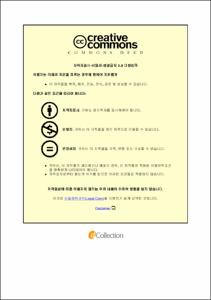심근수축력에 대한 대리 지표로서의 S1/S2 심음: 동물 실험 연구
- Abstract
- 서론: 심음도는 심장 판막 기능 및 혈역학에 대한 중요한 정보를 제공할 수 있는 심장 소리를 기록하는 검사이다. 식도 청진기는 전신 마취 중 지속적인 청진에 사용되지만, 지속적인 혈역학 지표로서의 심음 데이터를 조사한 연구는 흔하지 않다. 본 연구에서는 동물 실험 연구를 통해 혈역학적 변화를 유도하고 심음과 혈역학적 변수 간의 관계를 밝히고자 하였다.
방법: 마취된 돼지에 도부타민, 에스몰롤, 페닐에프린, 니카르디핀을 투여하여 심근 수축력과 혈관 저항성의 변화를 유도하였다. 또한 하대정맥 클램핑을 통해 정맥 환류를 제한하여 심박출량의 감소를 유도하였다. 혈역학적 변화와 심음 지표의 변화 사이의 관계를 분석하였다.
결과: 돼지 8마리의 실험 데이터를 분석하였다. 도부타민 투여는 수축기 혈압 (SBP), 맥압 (PP), dP/dtmax를 각각 평균 40.0 ± 10.9 mmHg, 19.8 ± 6.1 mmHg, 933.4 ± 281.9 mmHg/sec 증가시켰으며, 심음의 S1 진폭(S1amp)은 2840.4 ± 1401.8 AU 증가시켰다. 도부타민 투여 중 ΔS1amp와 ΔSBP, ΔPP 및 ΔdP/dtmax의 상관 계수의 평균값은 각각 0.94, 0.96 및 0.96이었다. 에스몰롤 투여는 SBP, PP, dP/dtmax를 각각 평균 30.1 ± 23.8 mmHg, 14.9 ± 20.9 mmHg, 619.1 ± 760.1 mmHg/sec 감소시킨 반면 S1amp는 1340.1 ± 1714.9 AU 감소시켰다. 에스모롤 투여 중 ΔS1amp와 ΔSBP, ΔPP 및 ΔdP/dt의 상관 계수의 평균값은 각각 0.80, 0.82 및 0.86이었다. 페닐에프린 및 니카르디핀 투여로 인한 혈역학적 변화는 심박수 변화와 유의미한 상관관계가 없었다. 하대정맥 클램핑으로 인한 SBP 및 PP의 변화는 S1amp의 변화와 양의 상관관계를 보였으며, 평균 피어슨 상관관계 계수는 각각 0.70 및 0.67이었다.
결론: 심음의 S1 진폭은 심근 수축성 변화로 인한 혈역학적 변화와 유의한 상관관계가 있었지만 혈관 저항의 변화와는 유의한 상관관계가 없었다. 심음은 잠재적으로 혈역학적 변화의 원인을 감별할 수 있는 비침습적 모니터링 방법을 제공할 가능성이 있다.
|Introduction: Phonocardiography is a recording of heart sounds that can provide valuable information about heart valve function and hemodynamics. Despite the esophageal stethoscope being used for continuous auscultation during general anesthesia, studies investigating phonocardiographic data as a continuous hemodynamic index are limited. In this study, we aimed to induce hemodynamic changes and to clarify the relationship between heart sounds and hemodynamic variables through an experimental animal study.
Methods: Changes in cardiac contractility and vascular resistance were induced in anesthetized pigs by administering dobutamine, esmolol, phenylephrine, and nicardipine. In addition, a decrease in cardiac output was induced by restricting venous return through inferior vena cava (IVC) clamping. The relationship between hemodynamic changes and changes in heart sound indexes was analyzed.
Results: Experimental data from 8 pigs were analyzed. Dobutamine administration increased systolic blood pressure (SBP), pulse pressure (PP), and dP/dtmax by an average of 40.0±10.9 mmHg, 19.8±6.1 mmHg, and 933.4±281.9 mmHg/sec, respectively, while S1 amplitude of the heart sound (S1amp) increased by 2840.4±1401.8 AU. The mean values of the correlation coefficients of ΔS1amp with ΔSBP, ΔPP, and ΔdP/dt during dobutamine administration were 0.94, 0.96, and 0.96, respectively. Esmolol administration decreased SBP, PP, and dP/dtmax by an average of 30.1±23.8 mmHg, 14.9±20.9 mmHg, and 619.1±760.1mmHg/sec, respectively, while S1amp decreased by 1340.1±1714.9 AU. The mean values of the correlation coefficients of ΔS1amp with ΔSBP, ΔPP, and ΔdP/dtmax during esmolol administration were 0.80, 0.82, and 0.86, respectively. The hemodynamic changes caused by phenylephrine and nicardipine administration did not correlate significantly with changes in heart rate. Changes in SBP and PP caused by IVC clamping were positively correlated with changes in S1amp, with mean Pearson coefficients of 0.70 and 0.67, respectively.
Conclusion: S1 amplitude of the heart sound was significantly correlated with hemodynamic changes caused by changes in cardiac contractility, but not with changes in vascular resistance. Heart sounds have the potential to provide a non-invasive monitoring method to differentiate the cause of hemodynamic changes.
- Issued Date
- 2023
- Awarded Date
- 2023-08
- Type
- Dissertation
- Alternative Author(s)
- Park Yong-Seok
- Affiliation
- 울산대학교
- Department
- 일반대학원 의학과
- Advisor
- 김성훈
- Degree
- Doctor
- Publisher
- 울산대학교 일반대학원 의학과
- Language
- eng
- Rights
- 울산대학교 논문은 저작권에 의해 보호 받습니다.
- Appears in Collections:
- Medicine > 2. Theses (Ph.D)
- 파일 목록
-
-
Download
 200000686837.pdf
기타 데이터 / 4.01 MB / Adobe PDF
200000686837.pdf
기타 데이터 / 4.01 MB / Adobe PDF
-
Items in Repository are protected by copyright, with all rights reserved, unless otherwise indicated.